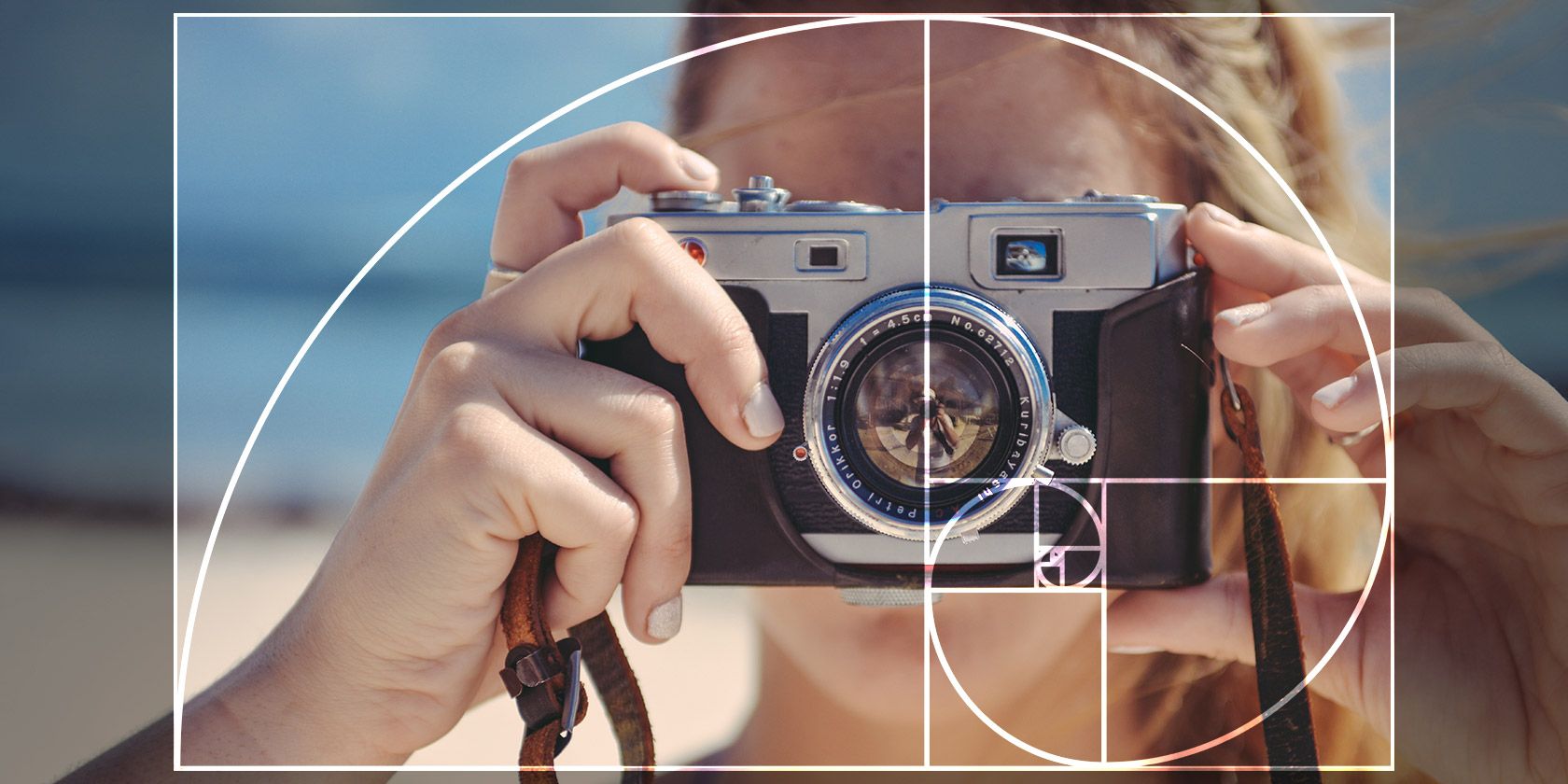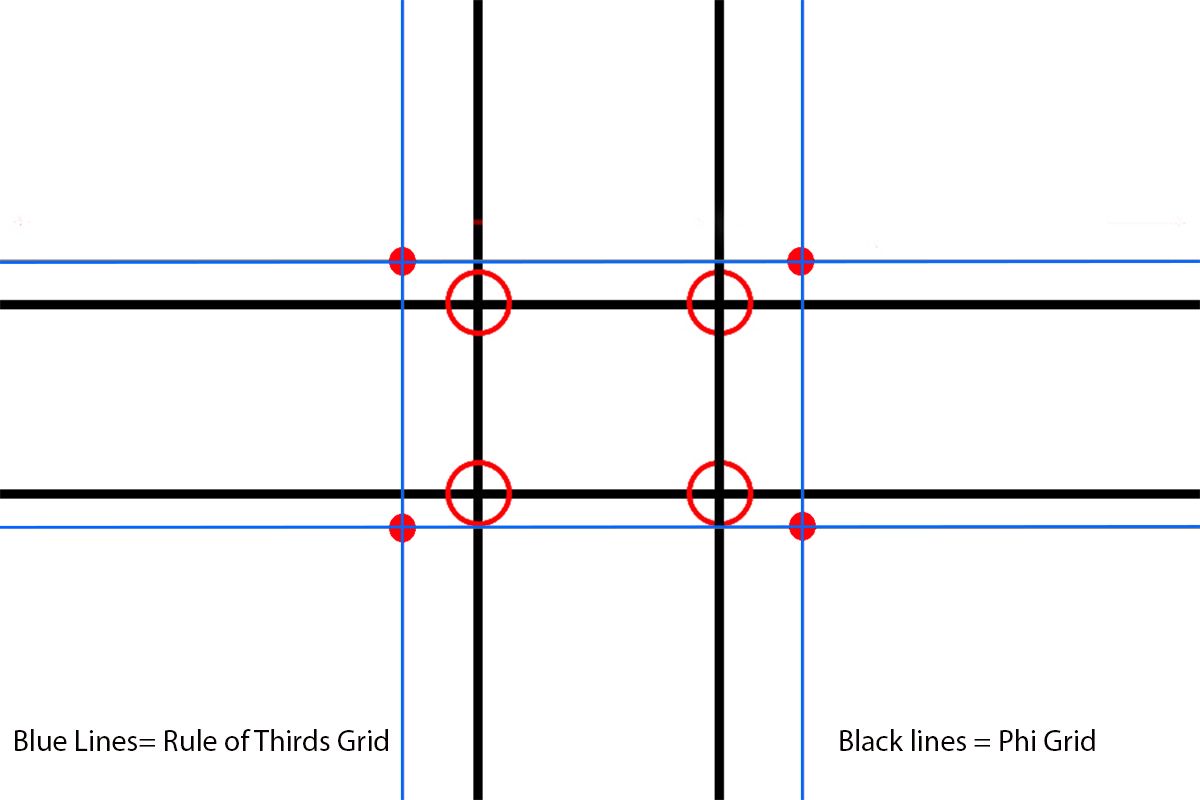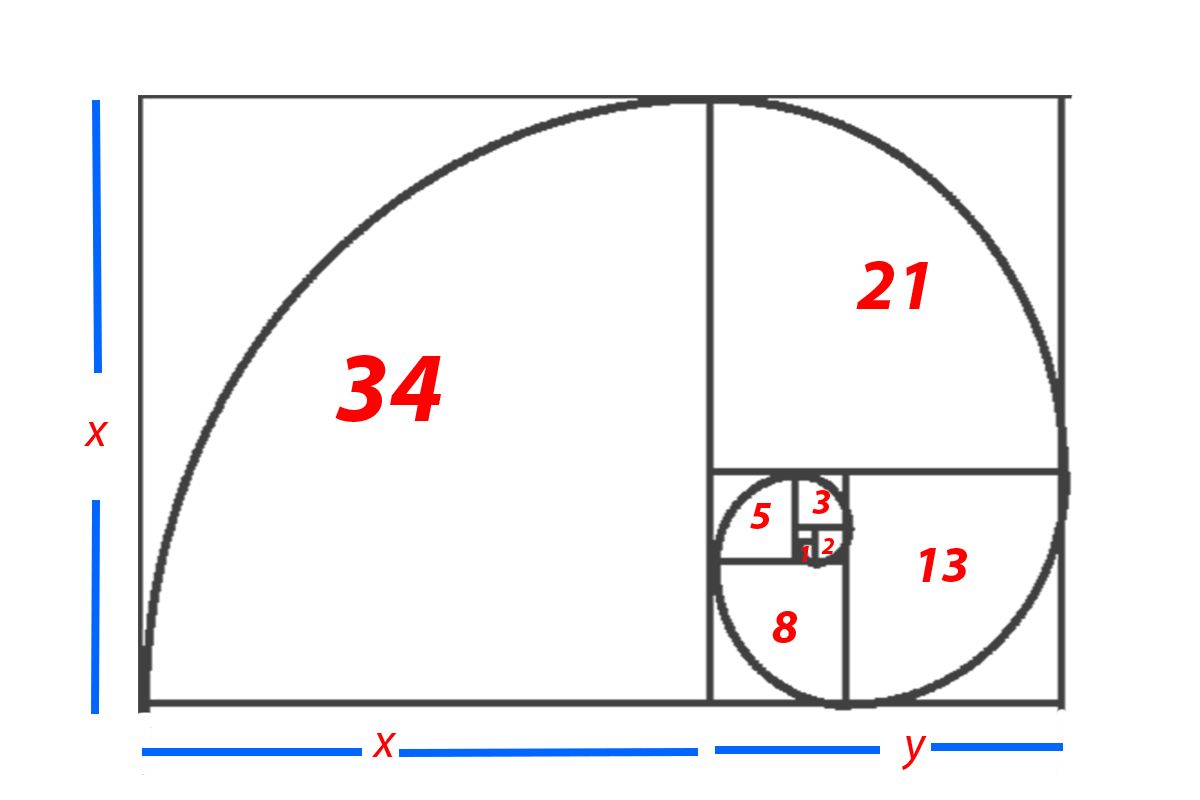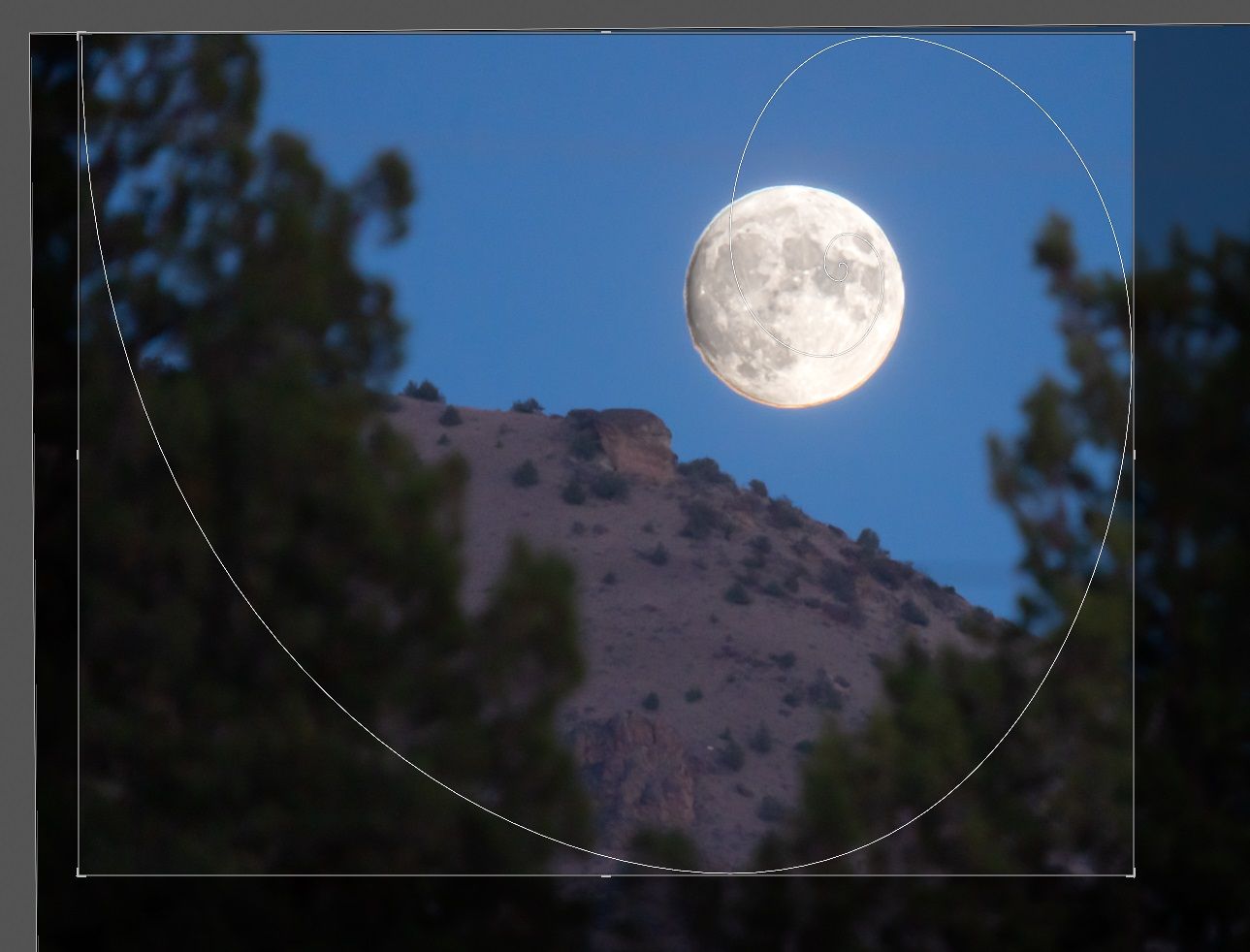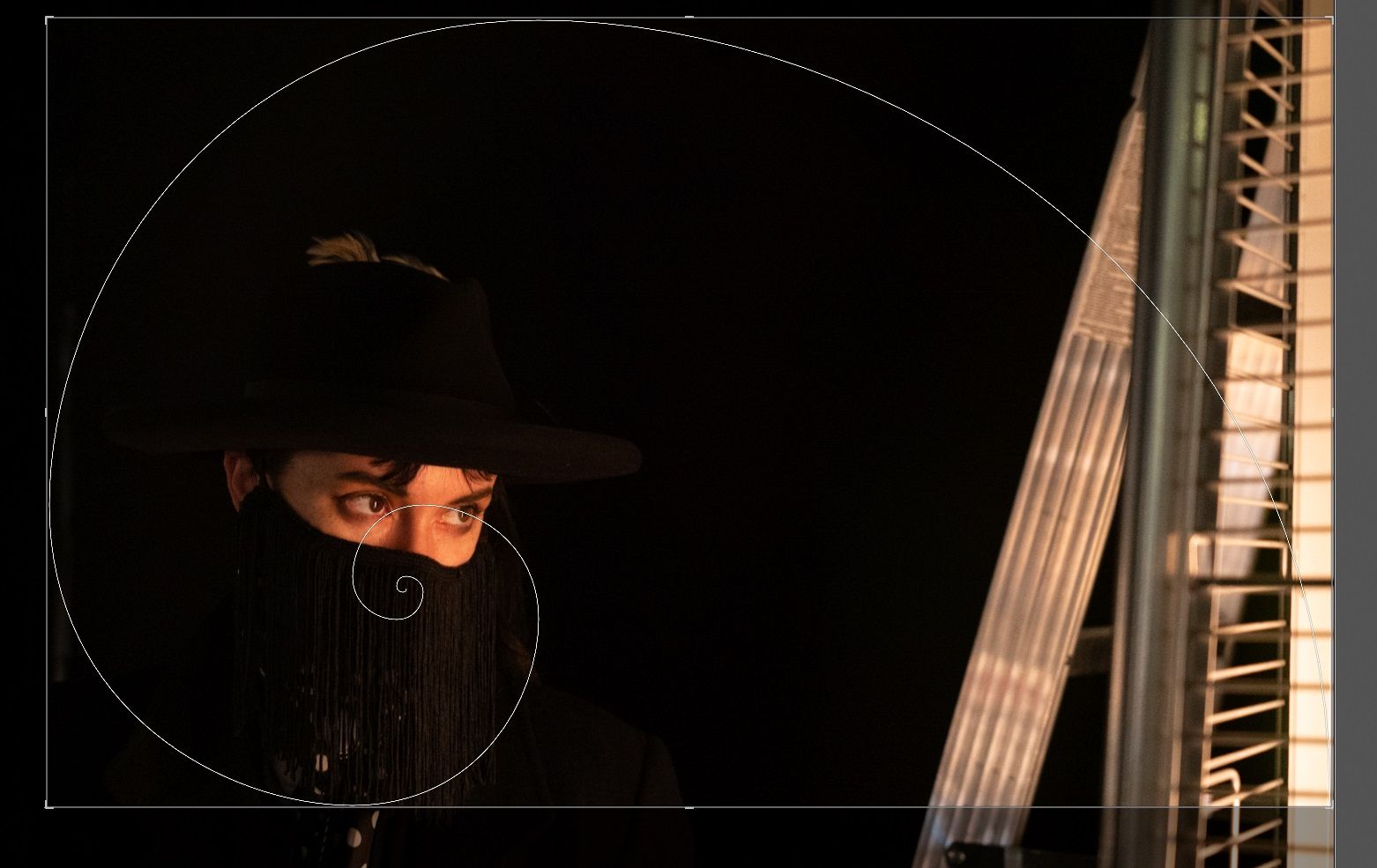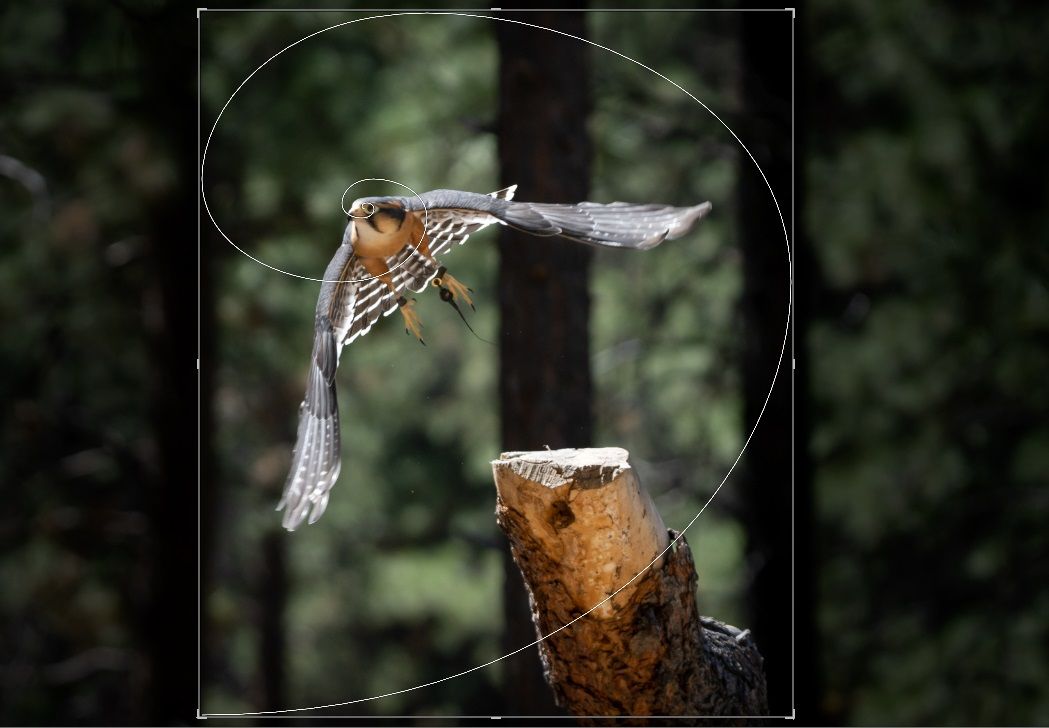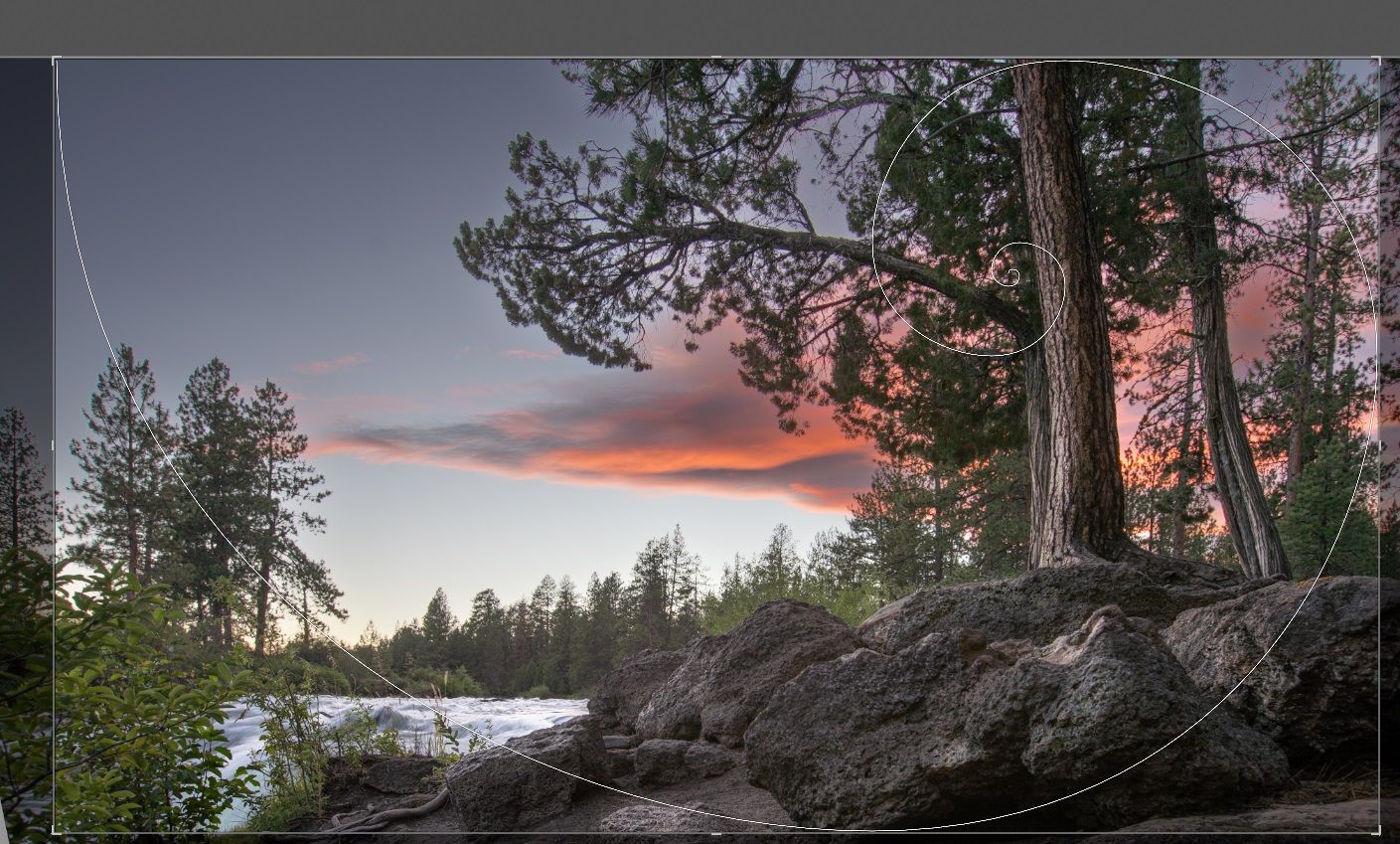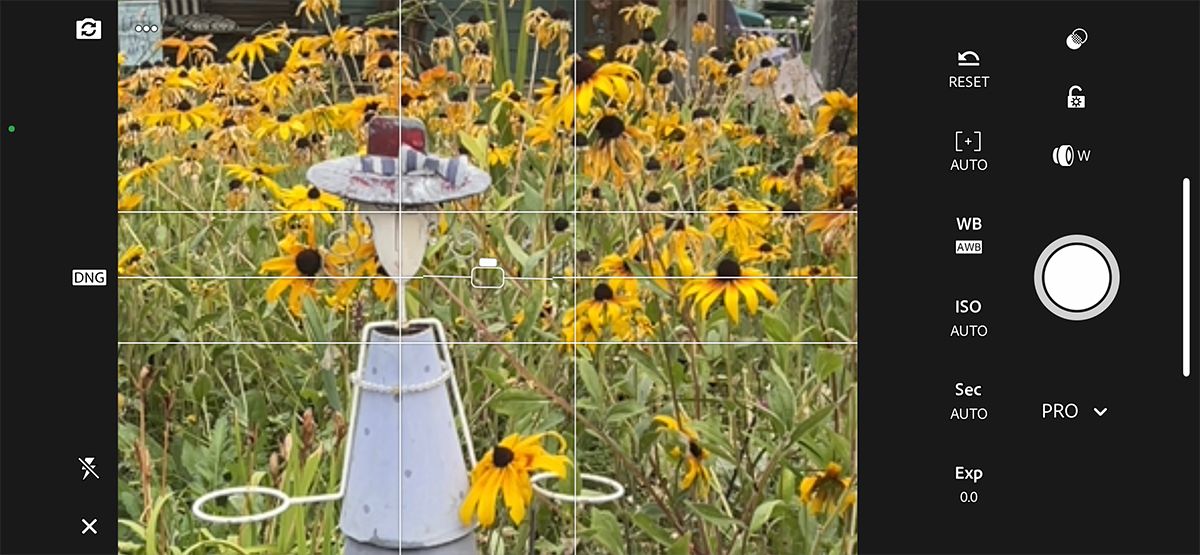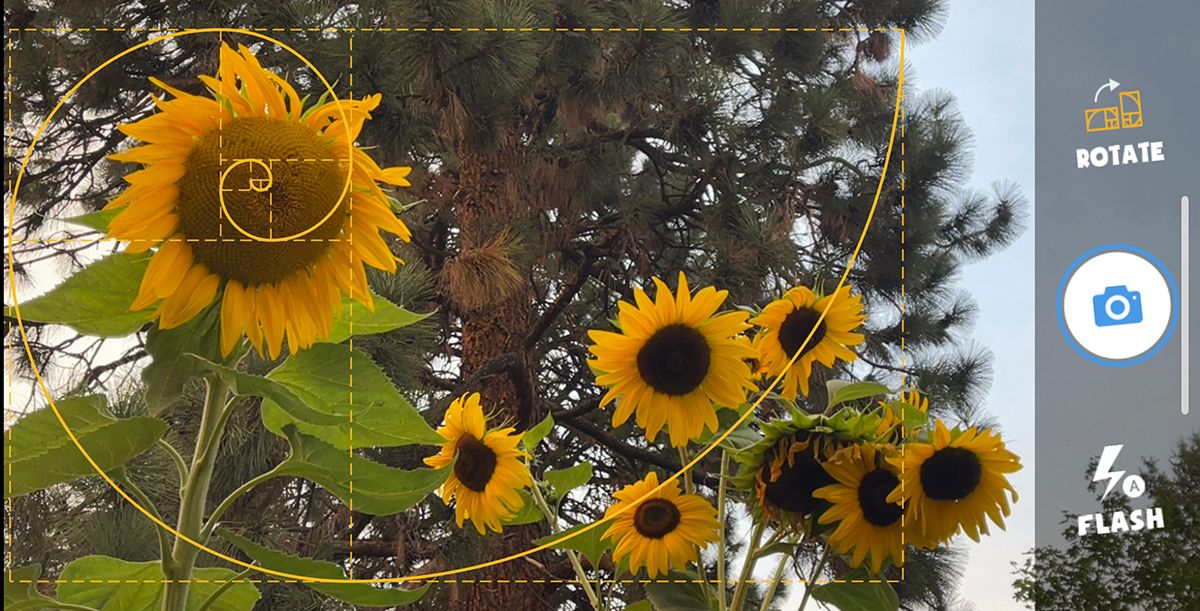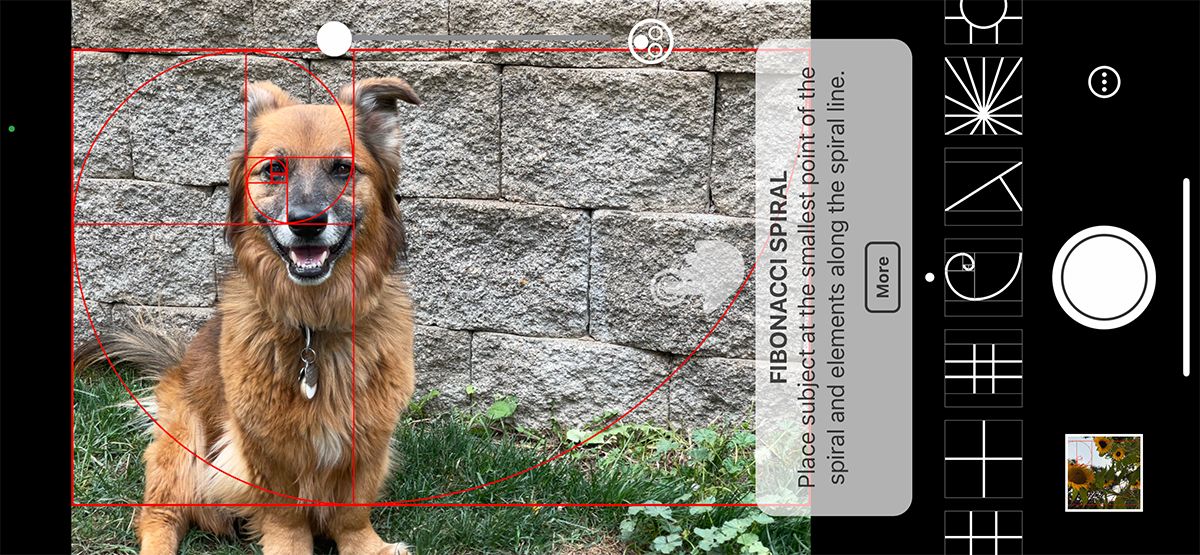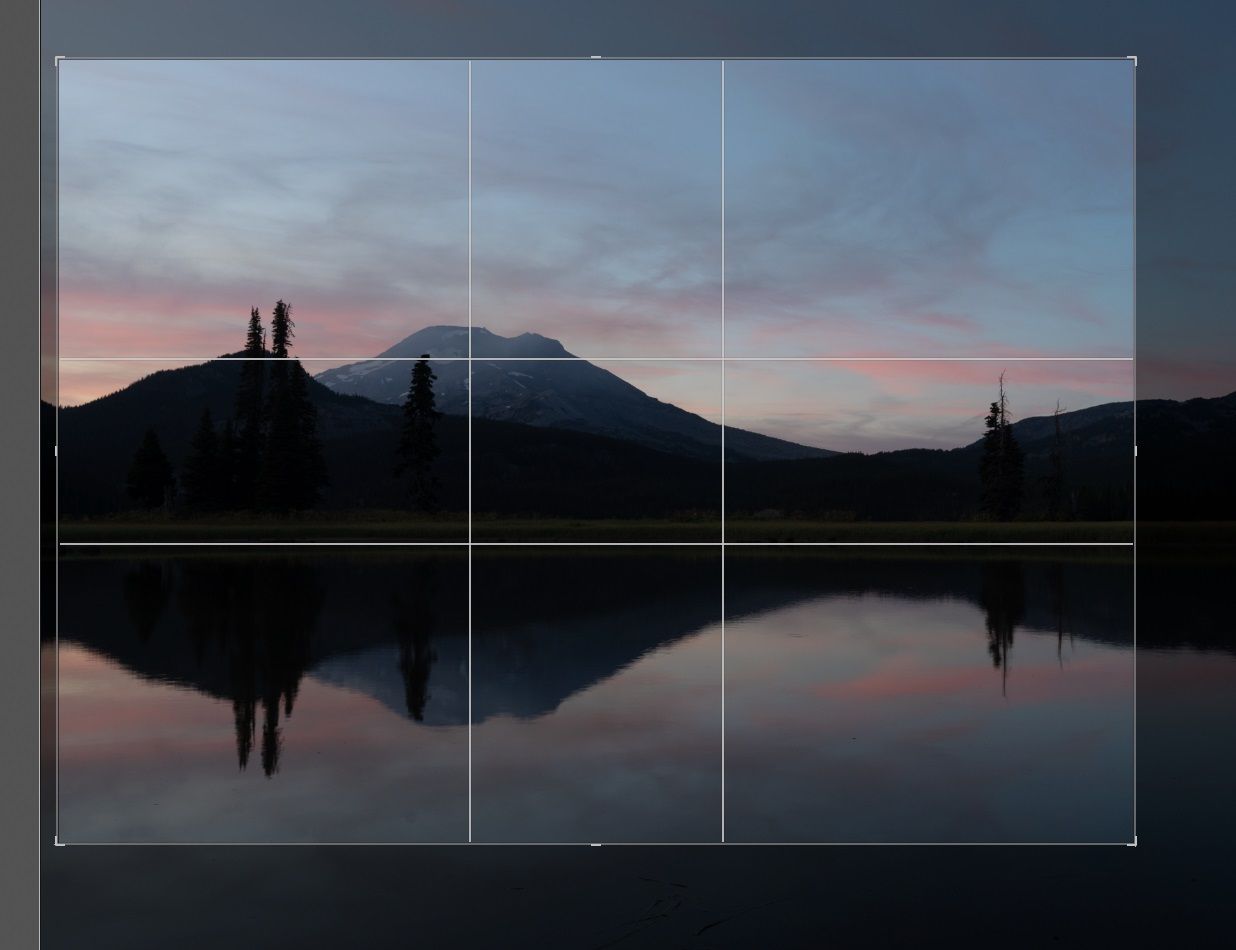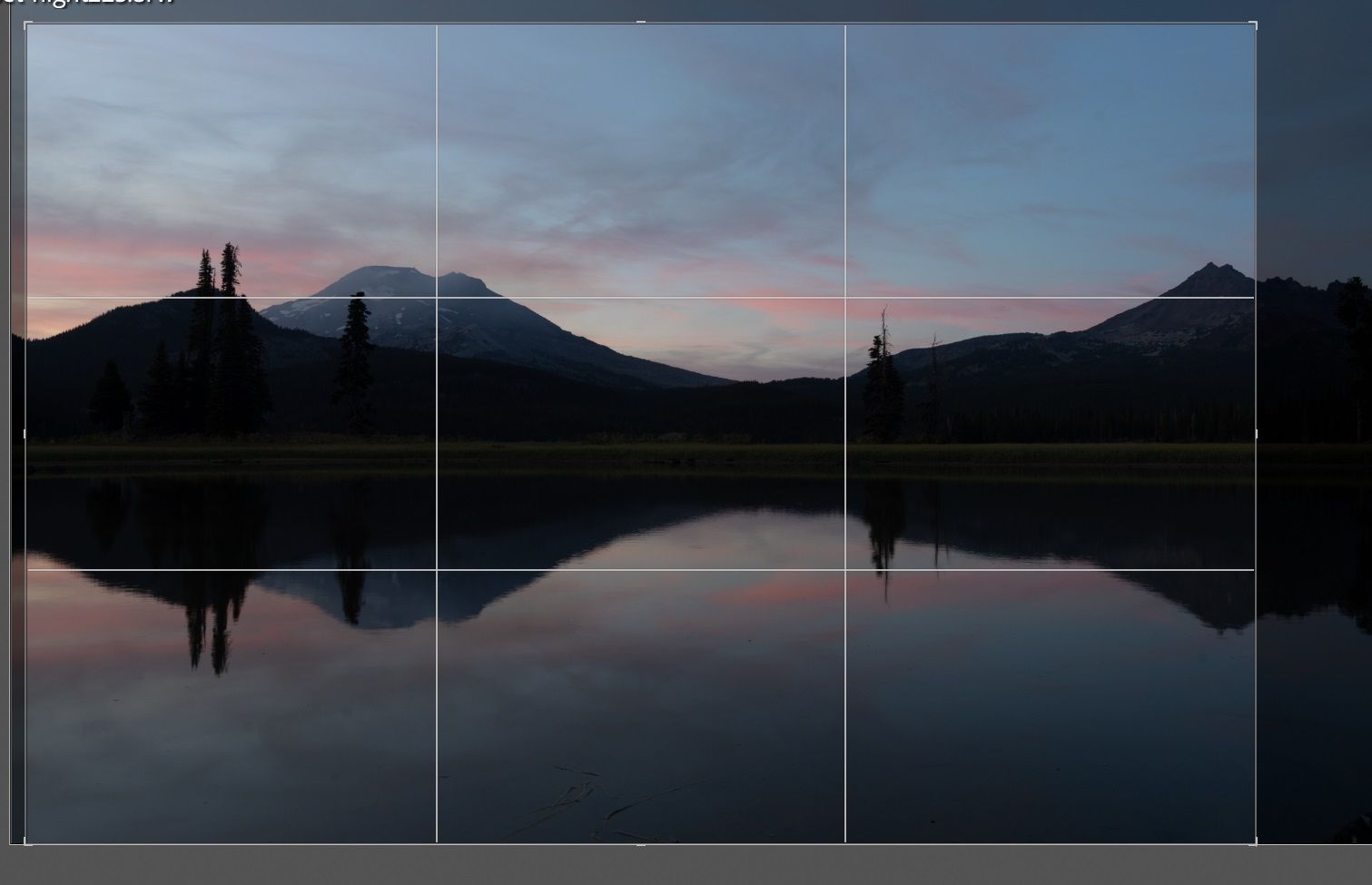Composition is how we place objects and elements in photography to create visual interest, impact, and tell a story. Several techniques help you frame your photo and determine where to place your content.
Cameras will often show the "rule of thirds" grid overlay. The golden ratio—also known as the golden mean, golden spiral, golden section, divine sections, divine proportions, Fibonacci spiral, or phi grid—is a similar, more effective compositional guideline based on ancient mathematics and used in art by masters like Michaelangelo, Leonardo DiVinci, and Salvador Dali.
What Is the Golden Ratio?
The golden ratio is a guide to where to place a subject (a tree, person, building, etc.) or element in a photo (like the horizon) where it will be most pleasing to the eye. That divine ratio is 1.618:1.
The first recorded definition of the golden ratio came from Euclid in the 3rd Century BC. Greek mathematician Euclid was best known for his geometry work, now known as "Euclidian geometry." He calculated the golden ratio using rectangles, which can also be explained using a line.
The golden ratio is a mathematical rule that says any line can be divided so that the longer segment divided by the shorter segment is the same ratio as the full line divided by the longer segment.
To put it visually:
The first segment is a. The second segment is b. The length of the line is a+b.
So the equation is: a/b = (a+b)/a = 1.6180339887498948420.
The golden ratio is an irrational number that continues forever and is shortened to 1.618. In mathematical circles, this unique number is represented by the greek letter Phi.
This equation is helpful for photographers with a handle on math and geometry. But even if you go blurry-eyed looking at numbers and equations, you can use the golden ratio as it is used to create the golden spiral and Phi grid. These overlays help visualize where to place elements in a photo.
What Is the Phi Grid?
The Phi grid is similar to the rule of thirds grid, which is commonly used to decide how to compose a photo. The rule of thirds is one of the basic principles of photography. Both grids use two horizontal lines and two vertical lines to divide the frame.
The rule of thirds divides a frame into three rows and three columns of equal size, or 1:1:1 vertically and 1:1:1 horizontally. The Phi grid similarly divides the frame but makes the middle row and middle column smaller according to the golden ratio. This results in 1.618:1:1.618 vertically and 1.618:1:1.618 horizontally.
Here's a quick comparison:
The viewer's eye is naturally drawn to the areas where the grid lines intersect. So, that is where to position the focal point of the photo. In this example, the Milky Way is placed on a vertical Phi grid line with its focal point at the intersection.
The Fibonacci Spiral
The golden ratio is the basis for the Fibonacci sequence that makes up the Fibonacci spiral. The sequence and spiral are named after the Italian mathematician Leonardo of Pisa, later known as Fibonacci (son of Bonacci). In 1202, Fibonacci introduced the sequence in his book "Liber Abaci". Like the grid overlays, the Fibonacci spiral is a guide to where to place the most important subject in a photo.
Mathematically, the Fibonacci sequence starts with the number 1, adds the previous whole number, and makes an endless series of numbers with that pattern. So the series looks like this:
1, 1, 2, 3, 5, 8, 13, 21, 34, 55, 89...
Or add 1+1=2 and 2+3=5 and so forth. After the first two numbers, the ratio of successive numbers is very close to the golden ratio.
In geometry, the golden ratio can also be expressed as a particular type of rectangle. Suppose you take the a+b line example (or x+y) and turn it into a rectangle, where the width is x, and the length is x+y. If you divide the area of that rectangle into a series of squares, it forms a spiral based on the Fibonacci sequence.
Fibonacci discovered that this "golden spiral" appears in several places throughout nature, from DNA molecules to flower petals, hurricanes, and the Milky Way. Just as the golden ratio is pleasing to the human eye in nature, so too is a photo that places content at the center of the golden spiral.
Adrian Bejan, professor of mechanical engineering at Duke's Pratt School of Engineering, says the golden ratio is aesthetically pleasing because of the evolution of human vision.
Long story short, our brain has to process everything our eyes see. The quicker it can process something, the more pleasing it is. Any image with the golden ratio leads the viewer through the entire photo and is quickly processed by the brain, so it signals that such an image is aesthetically pleasing.
How to Use the Fibonacci Spiral
No matter whether you do a simple genre of photography or something more complex, the Fibonacci spiral can work for you. The golden spiral can be used when framing a photo or deciding how to crop an image. Unfortunately, cameras often offer a rule of thirds grid overlay but not the Fibonacci spiral.
The idea is to place the object or where you want the viewer's eye to be drawn in the smallest curl of the spiral. This is where the eye naturally wants to go. The spiral can curl left or right vertically or horizontally. The important concept is the proportions that lead the eye to the photo's focal point.
If you don't have an overlay, you can estimate the placement by imagining a number 9.
As you can see, the spiral basically has a way of leading your eye naturally through the photo to the focal point or from the focal point back out of the image.
Both Lightroom and Photoshop offer a Fibonacci spiral overlay when cropping a photo. In the cropping tool, press O to circulate through the overlays. Once you reach the spiral, you can change its orientation by pressing Shift + O. Then move the cropping tool or resize the photo to place the main subject in the center of the spiral.
The Best Apps for the Golden Ratio
Phi grid and golden spiral overlays are available on some smartphone camera apps. Lightroom Mobile has a camera to capture photos in the app, which includes the Phi grid overlay.
Download: Lightroom for Android | iOS (Free, offers in-app purchases)
The Golden Ratio Camera app is a smartphone camera overlay that allows you to use the guide while taking photos on your phone.
Download: Golden Ratio Camera for Android | iOS (Free, offers in-app purchases)
Wise Camera includes a variety of compositional guide overlays with instructions on how to use them. Users can switch between the iPhone's ultra-wide angle, telephoto, and basic lenses.
Download: Wise Camera for iOS (Free, offers in-app purchases)
Golden Ratio vs. Rule of Thirds
Both the golden ratio and the rule of thirds grids will guide you to move the main subject out of the center of the photo. Except for a purposely symmetrical image, having the subject to one side or another brings tension and visual interest; the viewer spends more time looking at the photo and seeing all that is in it. It creates a flow and sense of movement.
The main subject is positioned further toward the right or left when placing it at one of the horizontal and vertical line intersections. In contrast, placing the subject at the intersection of the Phi grid or at the center of the golden spiral brings it more toward the center of the photo. Knowing this can help when shooting as you can guess placement based on the rule of thirds grid overlay on your camera.
This photo example shows the difference between cropping using the Phi grid and the rule of thirds grid. Note that the horizon is placed on one of the Phi grid lines. Getting the mountain (the focal point) at the intersection required cropping the photo more, resulting in a more elegant composition.
Aim to place the horizon on one of the horizontal Phi grid lines. Many beginning photographers place the horizon in the center of the photo. The golden ratio helps you to position a visible horizon further up or down in the photo for a better aesthetic.
When to Use the Golden Spiral and the Rule of Thirds
Here's when you should use the golden spiral and rule of thirds:
- Overall the golden spiral creates a more balanced image in landscape photography.
- Use the rule of thirds in portraits.
- Turn on the rule of thirds grid on your camera to guide you when taking photos.
- Use the golden spiral for precise placement when cropping photos.
Read our in-depth guide on how to use the rule of thirds.
Use the Golden Ratio for Better Composition
The golden ratio is simply a guide, a tool to create a better composition that will make your photo more appealing. Whether you use the Phi grid or golden spiral, it can improve your photos in a natural way. While it's a valuable tool, there are many other compositional techniques to create a visually interesting, impactful photo that tells a story.

